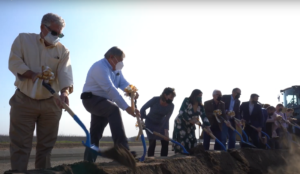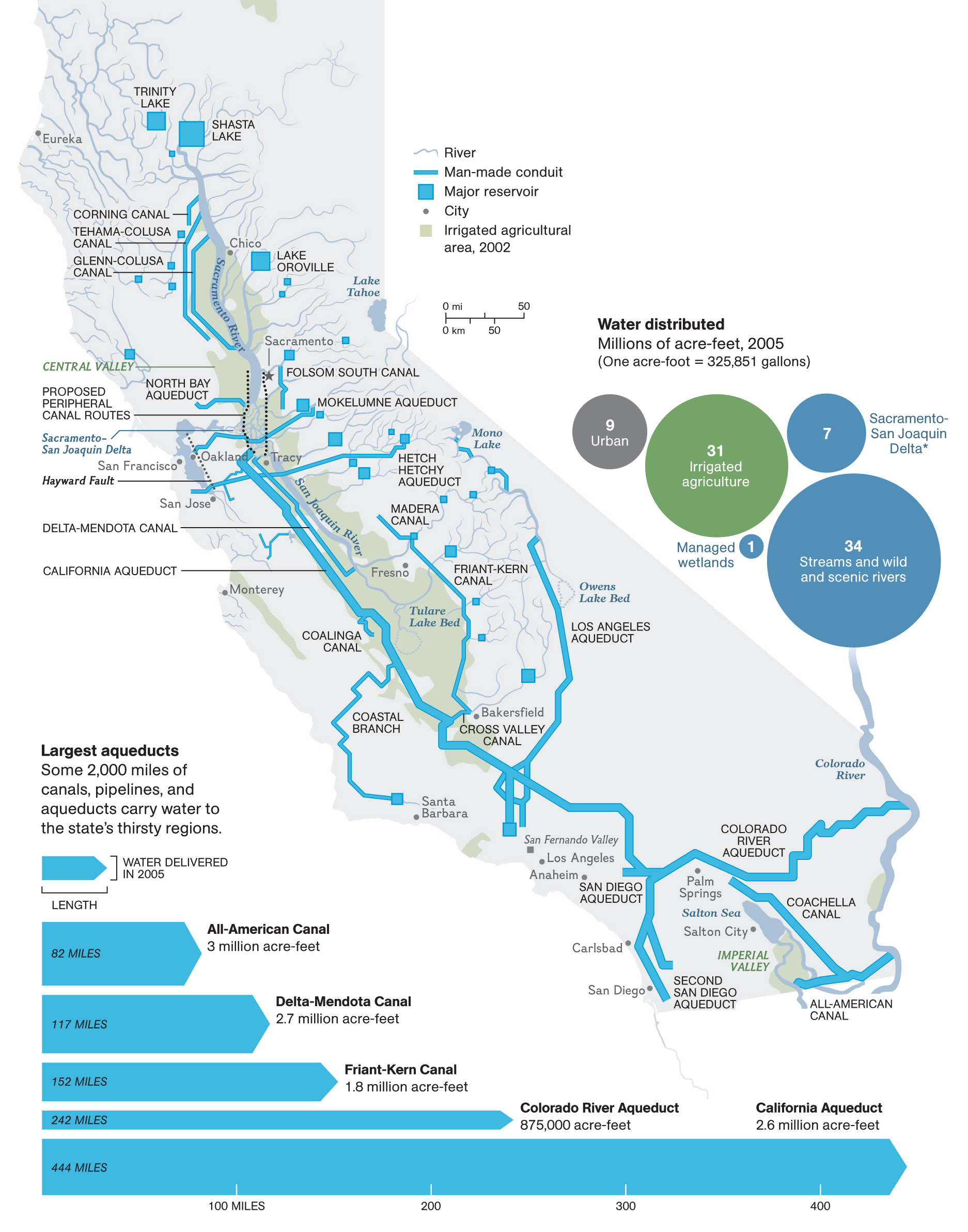Restoring Hetch Hetchy means being serious about water system improvements for San Francisco, so we pay attention to many of the higher profile projects and trends around throughout California. The $500 million project to repair the damaged Friant-Kern Canal is worth noting for several reasons.
 After years of seeking sufficient funds, officials ceremoniously broke ground last Tuesday. The Friant-Kern Canal is used to move water from the Friant Dam on the San Joaquin River to farms in Kern County. It has been unable to operate at full capacity for several years as the land beneath it has subsided, ironically due to groundwater pumping. The irony is magnified because, in wet years the Friant-Kern Canal is used very effectively to recharge groundwater – albeit in other areas. (For the most part, the 152 mile-long canal’s beneficiaries are not the same farmers as those whose pumping has damaged the canal – but are located further south.)
After years of seeking sufficient funds, officials ceremoniously broke ground last Tuesday. The Friant-Kern Canal is used to move water from the Friant Dam on the San Joaquin River to farms in Kern County. It has been unable to operate at full capacity for several years as the land beneath it has subsided, ironically due to groundwater pumping. The irony is magnified because, in wet years the Friant-Kern Canal is used very effectively to recharge groundwater – albeit in other areas. (For the most part, the 152 mile-long canal’s beneficiaries are not the same farmers as those whose pumping has damaged the canal – but are located further south.)
California’s 2014 Sustainable Groundwater Management Act is designed to prevent land subsidence as well as to help stabilize supplies for generations to come.
Repair of the Friant-Kern Canal has been controversial for two reasons. First, many believe that “users” should pay, rather than be subsidized (most of the cost is being picked up by the federal and state governments). Further Friant Dam and its associated canals have substantially dewatered the San Joaquin River, eliminating historic salmon runs (a restoration programs is underway but in its early stages).

Figure 1: California’s waterworks move water from the wettest to the driest parts of the state. Click to enlarge.
California’s largest canals transport water from north to south (see Figure 1, and click to expand). Friant-Kern is a major canal, part of the Federal Central Valley Project, but is tucked away in the southeast part of the Central Valley so it is seen by few. Any motorist who has traveled Highway 5 between the Bay Area and Los Angeles, however, is familiar with the California Aqueduct and the Delta-Mendota Canal, operated by the State and Federal governments.
The largest canals moving water east to west are the All-American Canal and Colorado River Aqueduct which transport Colorado River supplies to farms in the Imperial Valley and to cities in southern California. Up north, smaller facilities which move water east to west include the Mokelumne River Aqueduct (supplying Oakland and other East Bay cities) and the Hetch Hetchy Aqueduct (bringing Tuolumne River to San Francisco and its customers in San Mateo, Santa Clara and Alameda Counties).
San Francisco’s Hetch Hetchy Aqueduct for transporting its Tuolumne River water is actually a series of tunnels and pipelines and, like Friant-Kern, has required substantial upgrades in recent years. The City is planning a 5 year, $140 million project to repair its Mountain Tunnel in the Sierra foothills. In 2015, San Francisco completed construction of a redundant Irvington Tunnel (from Sunol to Fremont, see below) to prevent an extended outage that might be caused by earthquake activity on the Hayward fault. Restore Hetch Hetchy enthusiastically supported the Irvington project amid some controversy and encouraged others to do so – we do not begrudge San Francisco its use of Tuolumne River water; we only insist that they do not store it in Yosemite National Park.

